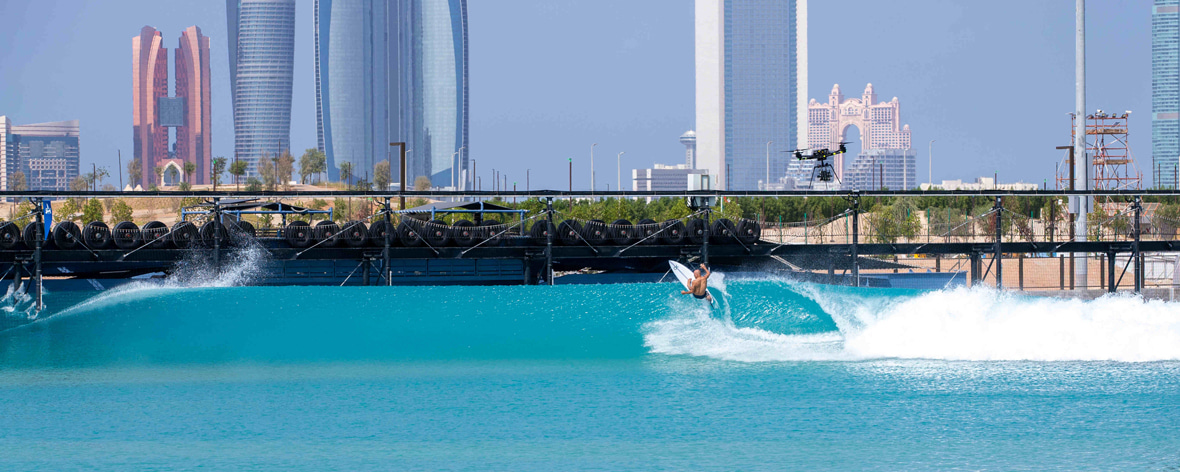Are you looking for a surf pool experience? Have you ever dreamed of surfing a river wave or rapid? Explore the world's most comprehensive map of artificial waves and inland surfing.
Check out the rates, the technology, the hours of operation, and the location of the world's best human-made and river waves.
Where is the closed wave pool near me? Find a wave pool, river, or static wave near you, plan a visit, book your session, and enjoy the ride.
Types of Non-Ocean Waves
There are two major categories of non-ocean waves: artificial wave pools and static waves.
Wave pools, or surf pools, are more or less large indoor or outdoor facilities where human-made waves are generated.
They resemble traditional swimming pools or inland lagoons but are equipped with mechanical, electronic, and hydraulic technologies capable of producing more or less bigger waves.
In a way, wave pools try to mimic the behavior of a classic ocean wave, which breaks parallel to the shore and allows surfers to ride them down the line as they peel across a more or less prolonged area.
Wave Pools: History and Technologies
The world's first wave pool dates back to somewhere between 1845 and 1886 when King Ludwig II of Bavaria electrified one of his private lakes to create artificial waves.
Later, in 1929, Germany's Munich opened an indoor swimming pool that generated small waves thanks to "agitators" that pushed water through grates in the diving zone.
In 1969, the first public inland wave pool opened to wave riders in Tempe, Arizona. It was called Big Surf and introduced landlocked water sports enthusiasts to the sport of surfing.
The mastermind behind its concept was Phil Dexter, a petroleum engineer and inventor.
The surf pool was 400 feet long, 300 feet wide, and nine feet deep. It contained 3.8 gallons of recirculating water and was, at the time, surrounded by desert sand.
Wildwater Kingdom (1985), Disney's Typhoon Lagoon (1989), Sunway Lagoon, and Seagaia Ocean Dome (1993) followed before the second generation gradually emerged in the 2000s.
Wavegarden (2005), Siam Park (2008), Wadi Adventure (2011), Kelly Slater's Surf Ranch (2015), BSR Surf Resort (2018), and Surf Lakes (2019) introduced new ways of recreating ocean waves in a controlled environment.
Take a look at this brief history of wave pools.
Static Waves: Indoor Wave Pools and River Waves
From a surfing perspective, there are two types of static, non-ocean waves: sheet waves and river waves.
Sheet Waves
Static waves, also known as sheet waves, are waves generated by powerful pumps that project layers of water at high speeds, allowing surfers to ride the energy of the water's movement and flow.
There are small, medium, and big structures used for riding these static waves.
Wave Loch, Citywave, and Murphys Waves are some of the key players in this multi-million industry.
They've already built and installed hundreds of static wave machines in hotels, seaside resorts, shopping centers, theme parks, water parks, private condos, airports, leisure centers, and luxurious cruise ships.
River Waves: Upstream, Downstream Surfing, and Tidal Bores
River waves can be broken down into three categories: downstream river waves, upstream river waves, and tidal bores.
The most common type of river wave is the downstream river wave. They can be found in many regions of the world, in urban or inland areas.
A river wave is created when a high volume of water flows over a rocky or higher bottom. The flow generates what is called a hydraulic jump.
The sudden bump allows the surfer to ride the virtually endless wave fast, even though he or she is not moving forward or sideways.
The most popular river breaks are located in the Eisbach River (Munich, Germany), Bend Whitewater Park (Oregon, USA), Snake River (Wyoming, USA), Zambezi River (Livingstone, Zambia), River Thun (Thun, Switzerland), River Mur (Graz, Austria), Glomma River (Sarpsborg, Norway) and Boise Whitewater Park ) Idaho, USA).
An upstream river wave is a rare wave that forms in the ocean and travels up the river.
In other words, the ocean pushes swell up river mouths and against the direction and flow of the natural river current.
In this particular case, the river surfer is actually moving forward while the wave holds a surfable face.
The most famous upstream river waves in the world appear once in a while in the Urumea River (Donostia/San Sebastian, Spain) and River Neet or Strat (Bude, England).
Finally, there's the tidal bore, a rare phenomenon that only occurs a few times in a few regions of the world.
Bores, also known as surges, are tidal events in which a massive and often single wave is created by the constriction of an incoming spring tide as it gets funneled up a narrow and shallow river.
Tidal bores can be deadly and often have destructive consequences, especially on the margins of the rivers.
The best tidal bores for surfing are Pororoca (Araguari River, São Domingos do Capim, Brazil), The Bono (Kampar River, Indonesia), Silver Dragon (Qiantang River, Haining Province, China), Severn (River Severn, Gloucester, England), Le Mascaret (Seine River, Le Havre, France), Bay of Fundy (Petitcodiac River, Moncton, Canada), Turnagain Arm (Cook Inlet, Gulf of Alaska, Anchorage, USA), and The Baan (Hooghly River, Kolkata, India).
Wave Pool Technologies
There are only a handful of wave pool technologies commercially available, and each company develops and sells its own patented concept.
The most advanced artificial wave pools are Wavegarden, American Wave Machines, Kelly Slater Wave Co., Surf Lakes, and Artwave Surf.
Wavegarden
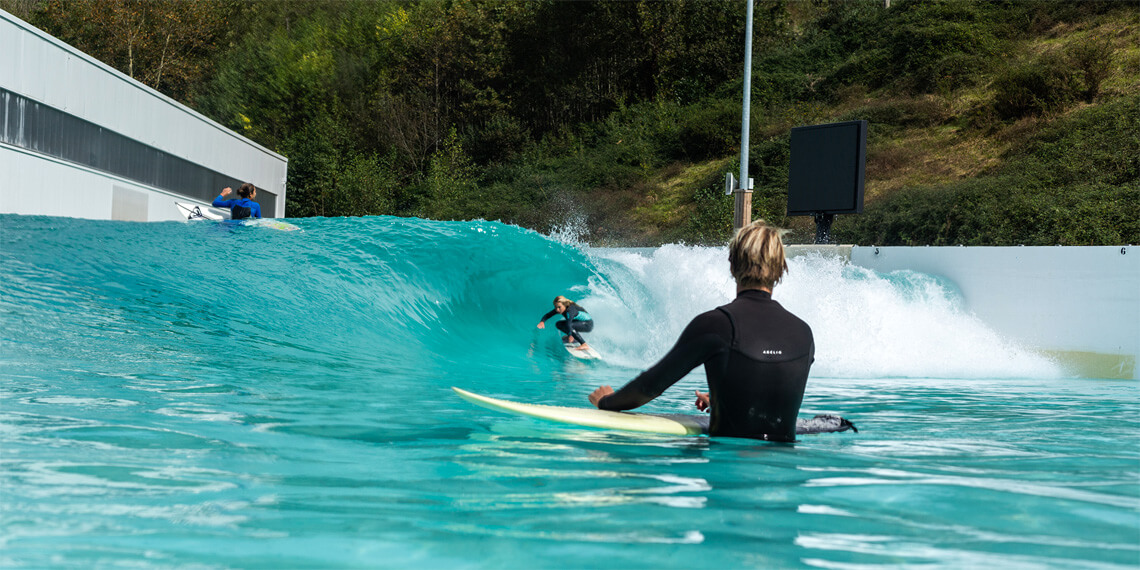
Wavegarden sells "The Cove."
Designed in the Basque Country, the company proposes a technology that is able to produce 1,000 ocean-like waves per hour.
The pool's bathymetry ensures that water currents circulate continuously with the flow of breaking waves without impacting their quality.
The size, shape, power, and frequency of each ride can be adjusted at the push of a button.
The Cove can pump waves of up to eight feet (2.4 meters) in sites smaller than one hectare.
Wavegarden estimates the running cost of each wave at around €0,10 for a six-foot, 15-second long wave.
American Wave Machines
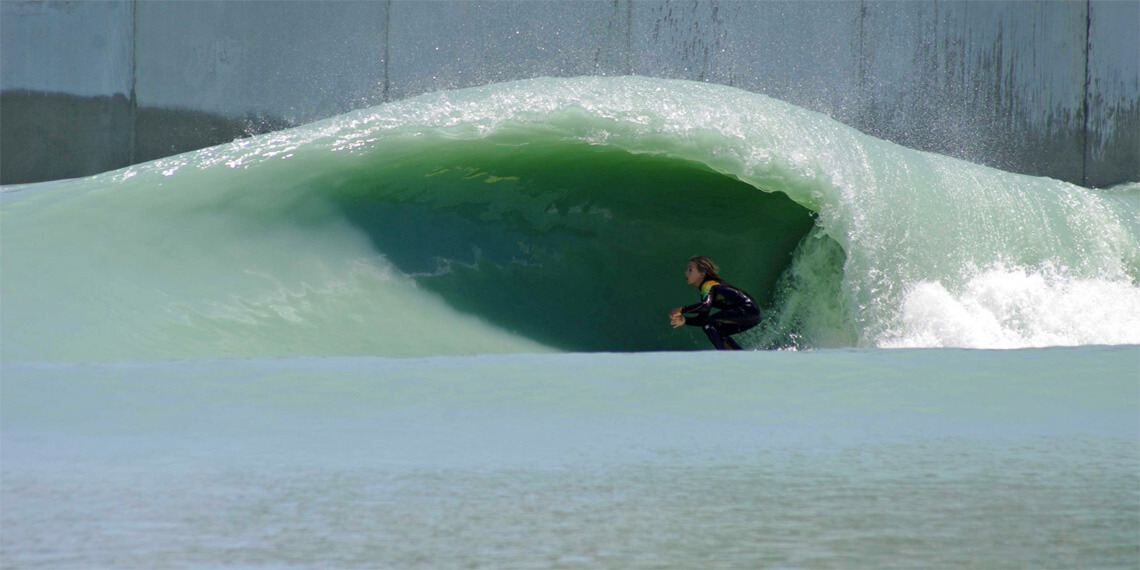
American Wave Machines (AWM) is currently selling PerfectSwell.
Their patented technology aims to imitate ocean waves and recreate surfing far away from the coastline.
By controlling air pressure firing patterns and sequences, they are able to pump unlimited wave types. All the operator needs to do is use a touchscreen interface to produce a new wave riding experience.
AWM says that their artificial waves can be designed to any size and shape specification, offering rides of between 10 to 15 seconds in a two-to-three-acre pool and rides of 40 and 50 seconds in larger pools.
In other words, you can get a point break (left or right), an A-frame wave, and barrels into peaky close-outs.
PerfectSwell can create a wave every three seconds.
Kelly Slater Wave Co.
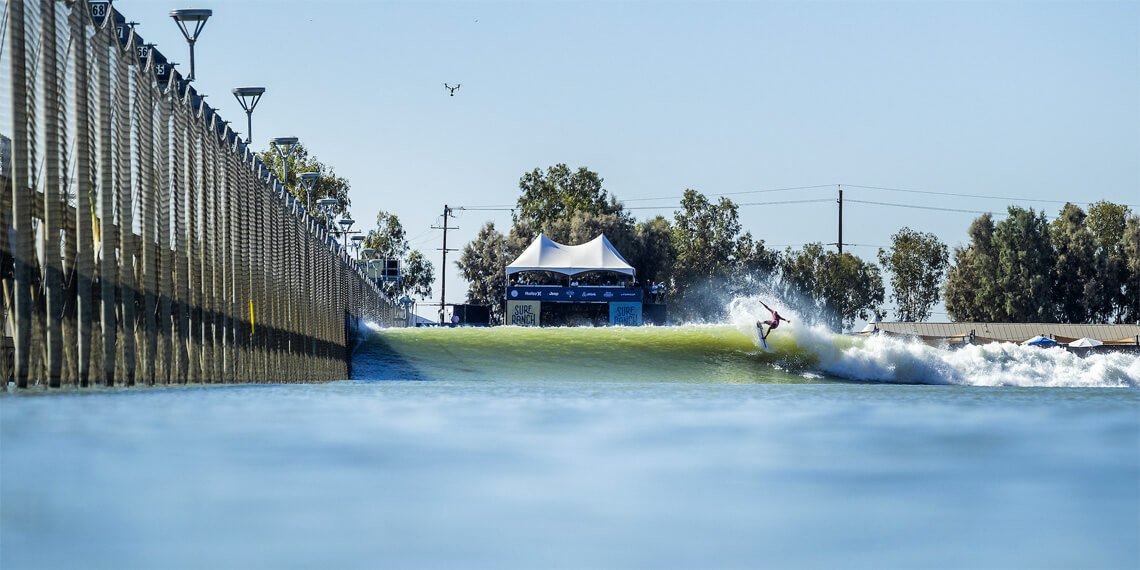
Professional surfer Kelly Slater dedicated two decades to developing the world's first barreling human-made wave.
Kelly Slater Wave Co. (KSWC) created a flexible technology that is able to produce variable waves for all levels of surfing.
The wave system mimics the power, speed, and experience found in ocean waves.
The contours of the KSWC wave pool were designed and perfected with the help of high-tech supercomputers.
Then, 100-ton hydrofoils run down a track at around 18 miles per hour (30 kilometers per hour) and produce a left and a right-hand wave.
When the swell hits specific areas of the lake's bottom, the wave starts to break, thanks to the influence of the contour reefs.
Giant lateral gutters mitigate the bounce-back effect that occurs on the pool walls.
The KSWC wave pool generates two waves of up to five feet every three minutes.
Surf Lakes
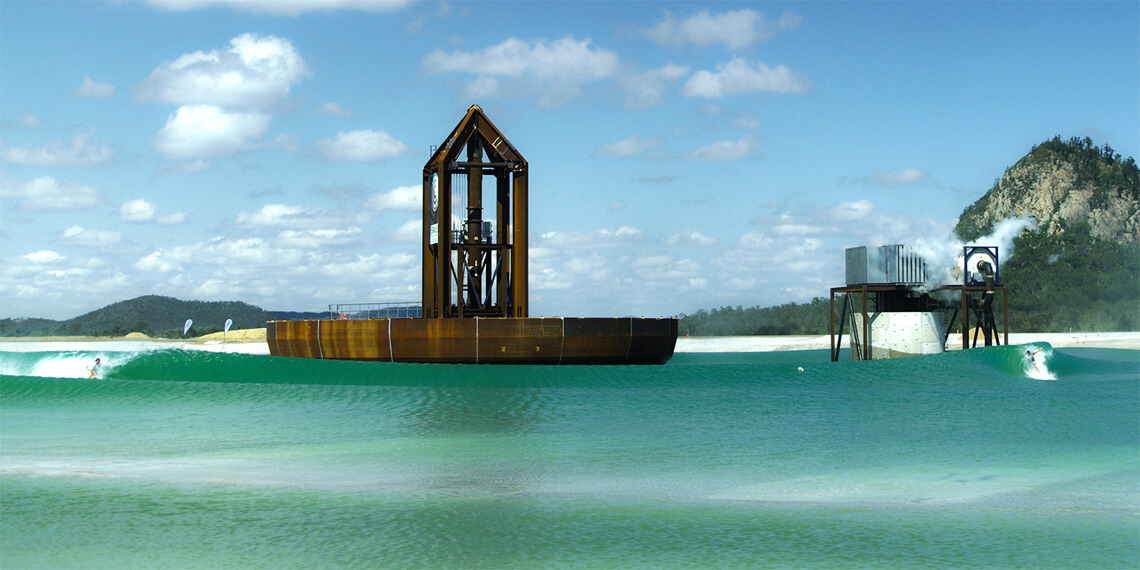
The Australian-based company developed a technology named 5 Waves that creates concentric waves in a 360-degree pool.
5 Waves produce up to 2,400 waves per hour. The company's concept allows the presence of 200 surfers in the water simultaneously.
Surf Lakes can offer various wave shapes, ride lengths with varying degrees of difficulty, and eight separate surf breaks.
The 5 Waves system pumps waves of up to 7.8 feet in all directions and over multiple breaks.
Surf Lakes believes that wind direction can be used to advantage, whichever direction it blows.
The technology requires a minimum lake size of 2.5 hectares plus a surrounding shoreline.
Artwave Surf
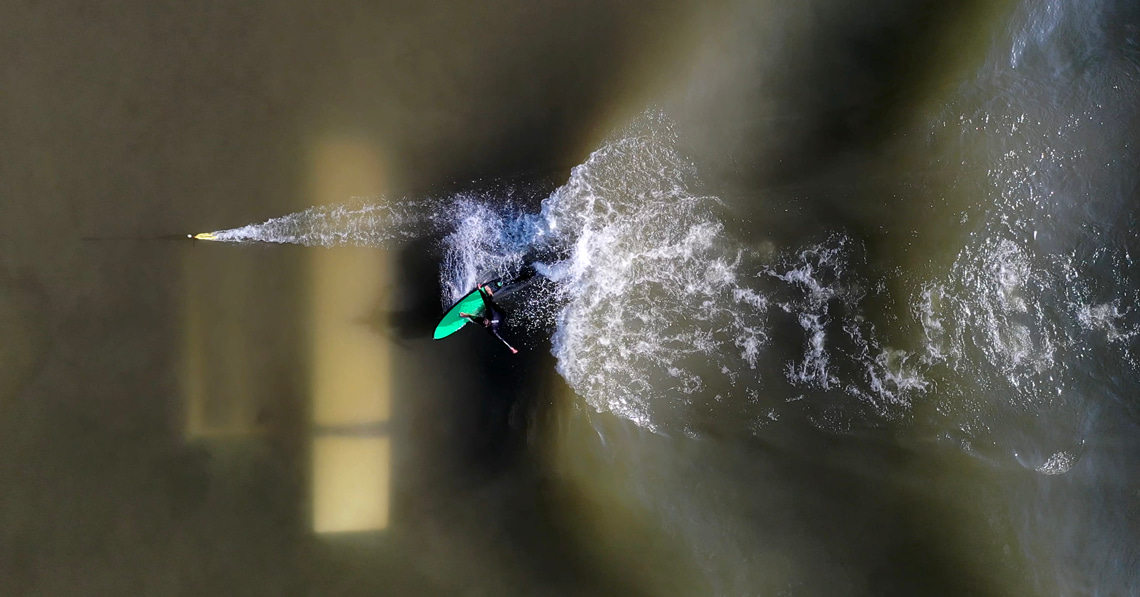
Artwave is a wave-generating technology developed in Finland aimed at creating surfable waves in natural bodies of water without causing any long-term environmental harm or requiring large infrastructure investments like traditional wave pools.
Its wave-making system is rooted in minimalism and low environmental impact. Instead of constructing a huge concrete pool, this technology works directly in open water, focusing on a "leave no trace" philosophy.
The technology operates underwater.
An engine and pulley system pulls a set of "wings" through the water, creating surfable waves. It functions best in water depths ranging from four to six meters.
The system can be set up in about three days and dismantled in as little as 24 hours. Importantly, it leaves behind no residual waste, infrastructure, or environmental alterations.
The cost of using the Artwave technology is around 10 percent of that associated with the traditional wave pool technologies that necessitate facility construction.
While Artwave isn't directly competing with traditional wave pools, they believe their system complements those seeking a more natural wave-surfing experience.
Currently, the Finnish company has a smaller-scale prototype. Still, they have the capability to create larger waves, with heights up to six feet and lasting for 20 seconds.
The idea for Artwave originated from Atso Andersen's desire to bring the joy of surfing to Finland, a nation with abundant water bodies but lacking consistent waves.
The company is in discussions with potential clients from various countries. They aim to deliver a turnkey solution tailored to the specific requirements of each location.
Since the system is novel and untested on a large scale in the surf park industry, they are actively seeking collaboration partners for pilot projects.
Research has been done on the environmental impact of the technology.
Two primary limitations are the depth of water and the vulnerability of the shoreline, which must withstand the force of the waves.
Given that underwater equipment deteriorates faster, the system has been designed to be mobile. It can be removed when not in use, reducing wear and tear. Materials and components are chosen based on maritime industry standards.
Once fully established, the technology can be adopted in various scenarios, from city promotions using urban waterways to surf resorts integrating waves with accommodations.
They could even establish a multi-wave setup akin to ski resorts with varying levels of wave difficulty.
In essence, Artwave is about democratizing the joy of wave riding, ensuring that it's accessible to everyone while leaving the environment as pristine as it was before the system was introduced.
Pay to Surf
All wave pools are privately owned.
As a result, the price per hour ranges from $40 to $190 depending on the type of wave (beginner, intermediate, or advanced), the season (spring-summer or fall-winter), the equipment you may need to rent (surfboards, wetsuits), and lessons you may want to book.
Customers wishing to enjoy the facility on a regular basis may purchase season passes or simply close the pool for a private party.
Some wave pool structures offer lounging, sleeping, and eating options, as well as other activities such as climbing zones, surf shops, kayaking, SUP, swimming activities, etc.
